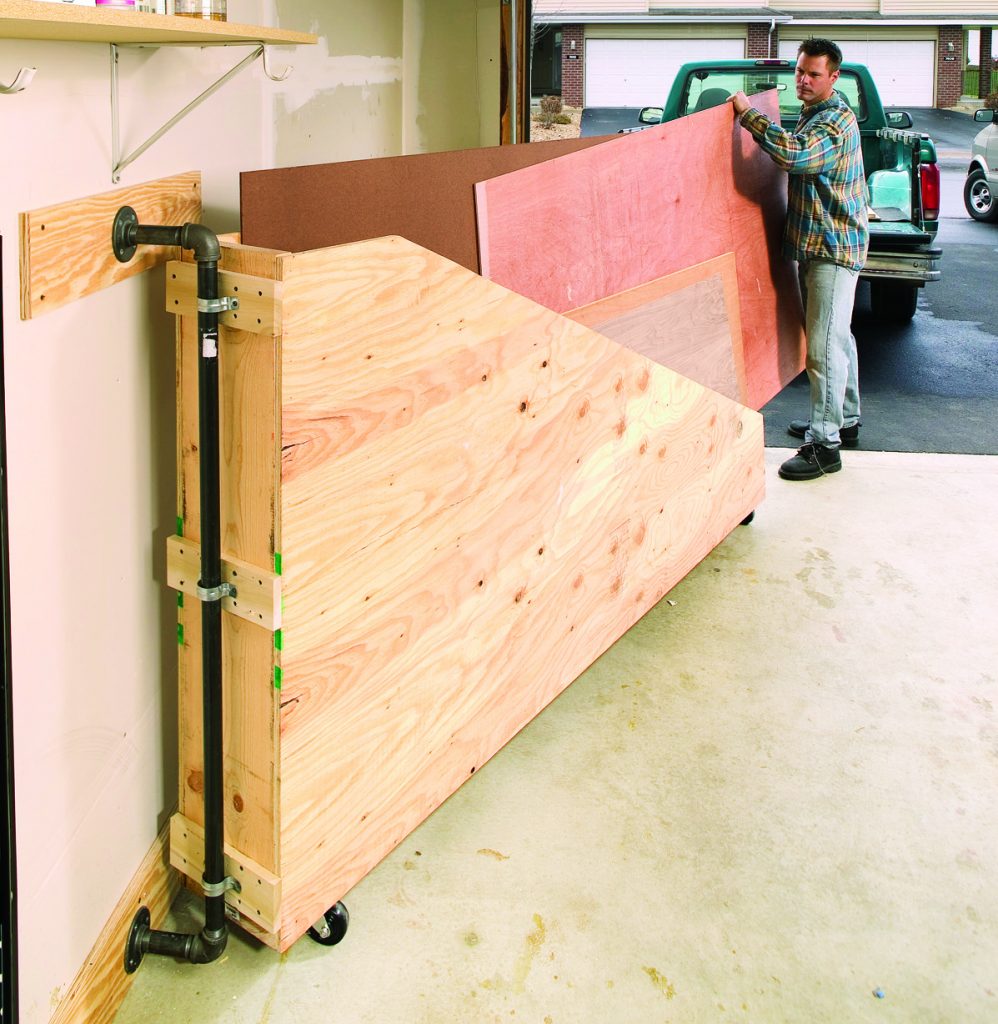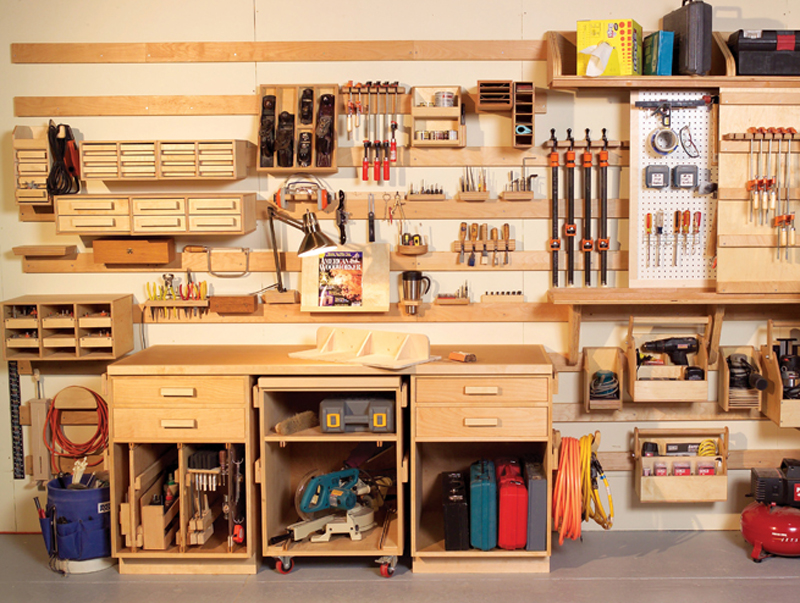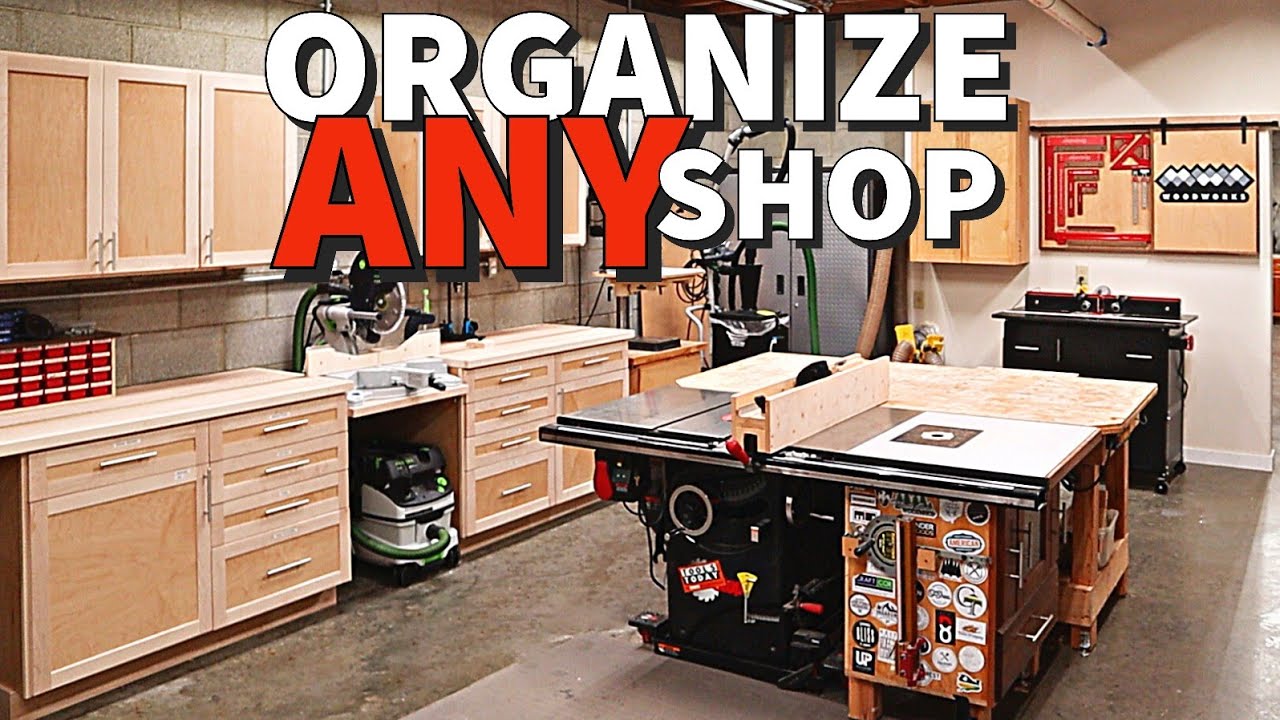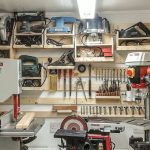To organize a woodworking shop, categorize tools, designate workstations, optimize storage, and maintain cleanliness for efficiency. Creating a well-structured and efficient woodworking shop is essential for maximizing productivity and ensuring a smooth workflow.
By implementing smart organizational strategies, woodworkers can save time searching for tools, enhance safety, and ultimately improve the overall quality of their work. Investing time and effort into setting up an organized woodworking shop will pay off in the long run by allowing craftsmen to focus on their projects without unnecessary distractions or disruptions.
Let’s explore some effective tips and techniques to help you optimize your woodworking space for maximum effectiveness.
Introduction To Woodworking Shop Organization
Discover effective strategies for optimizing your woodworking shop organization. Learn how to create efficient storage solutions and maximize your workspace for enhanced productivity and creativity.
The Importance Of A Well-organized Workspace
A well-organized woodworking shop is crucial for any craftsman who wants to work efficiently and safely. A cluttered workspace can not only hinder productivity but also lead to accidents, injuries, and damaged tools and materials. By organizing your shop, you can save time, reduce stress, and create a more enjoyable and comfortable working environment.Key Principles Of Shop Organization
To achieve an organized woodworking shop, you need to follow some key principles of shop organization. These principles include:- Decluttering: Get rid of any unnecessary tools, materials, and equipment that you no longer use or need. This will free up space and make it easier to find what you’re looking for.
- Grouping: Group similar tools and materials together in designated areas to make them easier to find and use. For example, keep all your measuring tools in one area and all your sanding equipment in another.
- Labeling: Label all your storage containers, drawers, and cabinets to make it easier to locate items quickly. Use clear, concise labels that are easy to read.
- Cleaning: Keep your shop clean and tidy by sweeping the floors, wiping down surfaces, and removing any debris or sawdust. Regular cleaning will help prevent accidents and prolong the life of your tools and equipment.
- Accessibility: Make sure all your tools and equipment are easily accessible and within reach. Keep frequently used items in easily accessible areas and store less frequently used items in harder to reach areas.
Evaluating Your Space
Organizing your woodworking shop starts with evaluating your space. Take stock of your tools, materials, and workstations to determine the best layout for efficiency and functionality. Maximize storage and create designated areas for different tasks to keep your shop tidy and productive.
Assessing Your Shop Layout
When it comes to organizing your woodworking shop, the first step is evaluating your space. Assessing your shop layout is crucial to ensure maximum efficiency and productivity. By taking the time to evaluate your space, you can identify areas that need improvement, optimize the layout, and create an organized and functional workspace.
To assess your shop layout effectively, consider the following:
- Measure the dimensions of your shop to have a clear understanding of the available space.
- Identify any obstacles or limitations, such as low ceilings, uneven floors, or immovable objects, that may impact your layout.
- Take note of any existing storage solutions or equipment that need to be incorporated into your organization plan.
- Consider the workflow and how different work areas should be positioned to promote efficiency.
- Pay attention to natural lighting sources and electrical outlets to plan your workspace accordingly.
Identifying Key Work Areas
Once you have assessed your shop layout, the next step is to identify the key work areas. These work areas will serve as designated spaces for specific woodworking tasks, allowing you to streamline your workflow and keep everything organized.
Here are some key work areas commonly found in woodworking shops:
| Work Area | Description |
|---|---|
| Workbench | A sturdy and spacious surface for assembling and working on projects. |
| Tool Storage | A designated area to store and organize your tools, ensuring easy access and efficient use. |
| Lumber Storage | A space dedicated to storing and categorizing different types and sizes of lumber. |
| Finishing Area | A well-ventilated and clean area for applying finishes to your woodworking projects. |
| Assembly Area | A designated space for assembling larger projects or joining different components together. |
| Power Tools Area | A section where your power tools, such as table saws or routers, are set up for easy and safe use. |
By identifying these key work areas, you can allocate the necessary space and resources for each task, ensuring a smooth and efficient workflow in your woodworking shop.
Tool Storage Solutions
When it comes to organizing your woodworking shop, efficient tool storage solutions are essential for keeping your workspace tidy and your tools easily accessible. There are various options to consider, from wall-mounted racks and pegboards to custom tool cabinets and drawers.
Wall-mounted Racks And Pegboards
Wall-mounted racks and pegboards provide a convenient way to store frequently used tools within arm’s reach. These versatile storage solutions can accommodate a wide range of hand tools and small power tools, keeping them organized and visible. By utilizing wall space, you can free up valuable bench or floor space, creating a more efficient and safer working environment.
Custom Tool Cabinets And Drawers
Custom tool cabinets and drawers offer a tailored approach to tool storage, allowing you to design storage solutions that perfectly fit your specific tools and workflow. These cabinets and drawers can be customized with dividers, foam inserts, and other accessories to keep tools secure, organized, and protected from damage. With a place for everything and everything in its place, you can optimize efficiency and minimize the time spent searching for the right tool.

Credit: www.popularwoodworking.com
Maximizing Workbench Efficiency
When it comes to organizing your woodworking shop, one of the key areas to focus on is your workbench. A well-organized workbench can significantly increase your productivity and efficiency in completing woodworking projects. In this section, we will explore the ideal workbench setup and how to incorporate tool accessibility to maximize workbench efficiency.
The Ideal Workbench Setup
The first step in maximizing workbench efficiency is to create an ideal setup. Here are some key considerations:
- Workbench Size: Ensure your workbench is large enough to accommodate your projects comfortably. A spacious workbench allows for better maneuverability and prevents clutter.
- Lighting: Adequate lighting is crucial to avoid straining your eyes and ensure precision while working. Position your workbench near a window or invest in bright, adjustable LED lights.
- Sturdy Construction: A solid and stable workbench is essential for handling heavy materials and providing a secure surface for your woodworking tasks. Choose a durable material, such as hardwood or plywood, for the workbench top.
- Workbench Height: Set the height of your workbench to match your comfort and working style. Ideally, it should be at a level that allows you to work without straining your back or arms.
Incorporating Tool Accessibility
Efficient tool accessibility is crucial to save time and effort during your woodworking projects. Here are some tips to ensure your tools are easily accessible:
- Tool Storage: Utilize wall-mounted pegboards, shelves, or tool cabinets to store and organize your tools. Categorize them based on their functions for quick and easy access.
- Tool Placement: Keep frequently used tools within arm’s reach of your workbench. This eliminates the need for constant movement and minimizes interruptions in your workflow.
- Tool Identification: Label your tools or use color-coded tape to quickly identify and locate specific tools. This saves time and prevents confusion while working on multiple projects.
- Tool Maintenance: Regularly clean and maintain your tools to ensure they are in good working condition. This prevents delays caused by malfunctioning or dull tools.
By implementing an organized workbench setup and incorporating tool accessibility, you can maximize workbench efficiency in your woodworking shop. A well-designed work area allows you to focus on your projects, reduces unnecessary movements, and improves overall productivity.
Material Storage And Organization
When it comes to creating an efficient woodworking shop, material storage and organization play a crucial role in maintaining a clutter-free and productive workspace. Properly storing and organizing your materials not only maximizes space but also improves safety and accessibility, ultimately enhancing the overall woodworking experience.
Lumber Storage Strategies
Effective lumber storage is essential for maintaining a well-organized woodworking shop. Utilize vertical space by installing wall-mounted racks or shelving units. Label each section according to wood type and size to facilitate easy retrieval. Additionally, consider utilizing a rolling lumber cart to keep frequently used stock easily accessible while saving floor space.
Keeping Small Parts Organized
Small parts such as screws, nails, and hardware require careful organization to prevent loss and streamline workflow. Invest in stackable plastic bins or drawer cabinets to categorize and store these items. Utilize dividers or small containers within the drawers to further organize and separate different types and sizes of small parts. Label each compartment clearly for quick identification.

Credit: m.youtube.com
Mobile Bases And Carts
Optimize your woodworking shop with mobile bases and carts for efficient organization and easy access to tools and materials. These versatile solutions maximize space and allow for seamless reconfiguration, enhancing workflow and productivity in your workshop.
Advantages Of Mobile Solutions
Mobile bases and carts offer flexibility and organization in a woodworking shop.
Designing Versatile Carts For Tools And Materials
Create carts with adjustable shelves and compartments for easy tool access.
Dust Collection Systems
In a woodworking shop, dust collection systems are crucial for maintaining a clean and safe working environment. Properly managing sawdust and debris not only improves air quality but also extends the life of your tools.
Selecting The Right Dust Collector
When choosing a dust collector, consider the size of your shop and the type of tools you use. Look for models with high suction power and efficient filtration systems.
Designing An Efficient Dust Collection Layout
Plan your layout to minimize ductwork and optimize airflow. Position the collector centrally and use smooth, wide ducts to reduce clogging. Regularly clean and maintain the system for optimal performance.
Lighting And Electrical Considerations
When setting up your woodworking shop, Lighting and Electrical Considerations are crucial. Paying attention to Optimizing Shop Lighting and Safe and Accessible Power Outlets is key.
Optimizing Shop Lighting
Proper lighting is essential for woodworking precision and safety.
- Use LED lights for bright, energy-efficient illumination.
- Position lights over workbenches to reduce shadows.
- Consider installing task lighting for detailed work areas.
Safe And Accessible Power Outlets
Having sufficient power outlets ensures convenience and safety in your workshop.
- Install multiple outlets strategically around the shop.
- Use ground fault circuit interrupters (GFCIs) for added safety.
- Keep cords organized and out of the way to prevent tripping hazards.
Maintaining Organization
Maintaining Organization Routine Cleaning Schedules Implementing an Organizational System Maintaining OrganizationConsistency is key in maintaining a well-organized woodworking shop. By establishing routine cleaning schedules and implementing an organizational system, you can ensure efficiency and productivity in your workspace.
Routine Cleaning Schedules- Set aside time daily for quick tidying tasks.
- Weekly deep clean to declutter and organize work areas.
- Monthly inventory check to assess tool condition and supplies.
- Assign specific storage areas for tools and materials.
- Label shelves, bins, and drawers for easy identification.
- Utilize pegboards, cabinets, and toolboxes for efficient storage.

Credit: www.popularwoodworking.com
Frequently Asked Questions
How Can I Maximize Space In My Woodworking Shop?
To maximize space in your woodworking shop, consider installing wall-mounted shelving, utilizing vertical storage solutions, and organizing tools and materials into designated storage areas. Implementing efficient workflow layouts can also optimize the use of available space.
What Are The Essential Tools For Organizing A Woodworking Shop?
Essential tools for organizing a woodworking shop include pegboards for tool storage, sturdy workbenches with built-in storage, versatile storage cabinets, and a reliable dust collection system. Additionally, labeling and categorizing storage bins can enhance organization and efficiency.
How Do I Maintain A Clean And Organized Woodworking Shop?
Maintain a clean and organized woodworking shop by implementing a regular cleaning schedule, storing tools and materials after each use, and sweeping or vacuuming the workspace daily. Additionally, incorporating a dust collection system and utilizing proper waste disposal methods are essential for cleanliness.
What Are Some Effective Storage Solutions For Small Woodworking Shops?
Effective storage solutions for small woodworking shops include compact tool chests, foldable workbenches, stackable storage bins, and mobile tool carts. Utilizing overhead storage racks and magnetic tool holders can also maximize space in a small shop.
Conclusion
Organizing a woodworking shop can be a daunting task, but with the right approach, it can be achieved. Start by decluttering and assessing your space, then create zones for different activities. Utilize storage solutions and prioritize safety measures. By following these steps, you can create a functional and efficient woodworking shop that will enhance your productivity and enjoyment of the craft.
Remember, a well-organized shop is key to successful woodworking projects.



